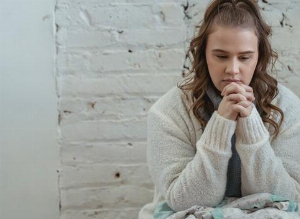"Spring forward, fall back": How does changing time affect our health?
Published Mar 9, 2022 • By Candice Salomé
Daylight Saving Time (DST) has been officially used in the United States since 1967, when the Uniform Time Act of 1966 came into effect. Though its starting and ending dates have changed over the years, with the last time as recently as in 2005, the concept remains the same: roughly around the period of the spring and fall equinox, we advance or turn back the clock by one hour. In 2022, Daylight Saving Time will begin at 2:00 AM on Sunday, March 13.
But why, exactly, do we change time in spring and fall? Can this time change have an impact on our health? How can we prepare for it?
We explain it all below!

Why do we change the time twice a year?
After the dark, cold, winter days of December, January, and February, many of us look forward to the longer days that come with Daylight Saving Time (DST) in March. The idea of an extra hour of sunlight brings joy to many after the long winter period and signals the ticking closer of summer.
But when and why did this idea of changing time begin? For the answers, we need to look back in time ourselves!
When was the concept of Daylight Saving Time first proposed and put into practice?
Some people like credit Benjamin Franklin with the idea of turning back the clocks. Though he did recommend that people get out of bed earlier in the morning to limit the use of lamp oil and candles in a 1784 letter to the editor of the Journal of Paris, his recommendation was more of tongue in cheek, and nothing came of it.
Later in 1895, New Zealand entomologist George Hudson, developed the modern concept of DST, proposing a two-hour time shift, so that he could benefit from more after-work sunshine hours for hunting insects in the summer. He suggested moving the clocks forward two hours in October and then two hours back in March.
Similarly, in 1905, British builder William Willett proposed moving the clocks ahead 20 minutes every Sunday in April and then setting them back 20 minutes every Sunday in September. Making eight time changes each year, it's no surprise that his idea didn't stick!
Daylight saving time was first practically used during World War I; in 1916, a number of locations within Imperial Germany set their clocks ahead one hour as a way to conserve power and fuel for the war effort. Many countries in Europe soon followed and returned to standard time after the war was over.
Daylight saving time in the United States
Daylight saving time was first used in the US during WWI as well, with a 1918 bill introducing the concept of a time shift. The bill was widely unpopular and lasted only seven months before being repealed. DST became a local option and continued in a few states such as Rhode Island and Massachusetts, and in certain cities, like Chicago, Philadelphia, and New York.
During World War II, President Franklin D. Roosevelt brought back the concept of DST by instituting a year-round daylight saving time he called "War Time," which lasted from February 9, 1942, until September 30, 1945.
DST didn't become standard in the US until the Uniform Time Act of 1966, which established a yearly time change beginning the last Sunday in April and ending the last Sunday in October. The states could still exempt themselves from DST, as long as the entire state did so.
In the 1970s with the 1973 oil embargo, Congress passed the Emergency Daylight Savings Time Conservation Act, which established a year-long trial period of daylight saving time from January 1974 to April 1975 to save energy. Unfortunately, the plan did little to conserve energy and the US changed back to standard time in October 1974.
From 1987 through 2006, daylight saving time started the first weekend in April, running through the last weekend in October. DST evolved once again in 2007, with the Energy Policy Act of 2005. This act mandated that DST:
- Begins at 2:00 AM on the second Sunday of March and
- Ends at 2:00 AM on the first Sunday in November
This is still in place today. There are only two states that don't observe DST: Arizona and Hawaii.
There has been a push in recent years to make daylight saving time year-round and legislation is underway or has passed in many states. This legislation requires federal approval before it can be enacted.
Can daylight saving time have an impact on our sleep?
In the fall, when we move the clock back by one hour, we gain one hour of sleep. In spring, it's the opposite: we move the clock forward one hour and we lose one hour of sleep. While our clocks and digital devices are easy to reprogram when changing time, the same can't always be said for our internal clock.
Our circadian rhythm or "biological clock", an internal process regulated in the brain, is synchronized on a 24-hour day defined by the alternation of day and night. Each time the time changes, it can be de-regulated for several days, especially in the spring, when we change to DST, or "summer time".
For some people, this can cause:
- Trouble falling asleep
- Difficulty paying attention
- Changes in appetite - excess hunger, or loss of hunger
- Decrease in work productivity
- Mood swings or disorders
Our internal clock regulates, among other things, the secretion of melatonin, also called the sleep hormone, and immune system activity. This mechanism allows us to mark time and establish life rhythm (getting up at a certain time, eating at a certain time, etc.).
Standard time, or the time we follow during the winter months, is "preferable" in a sense to DST, because it is closer to our body's actual rhythm, making it easier to adapt. On the other hand, at the changeover to DST, it is more difficult to go to bed "early" because it is still light out. This impacts children even more.
According to sleep specialists, changing time takes a harder toll on the body than jet lag related to travel. Indeed, during a time shift, we change our activities and our way of life - the individual adapts. However, when faced with a time change, where one loses or gains an hour, the individual has to maintain the same rhythm of life.
How can changing time impact our health?
Health-related problems linked to changing the clocks are more common in certain people. There are three main groups at risk:
- Older people: As we age, we become more sued to fixed schedules and shorter sleep, so older people are therefore more likely to have trouble adjusting to time change.
- People who are sick (or hospitalized): People who are sick or even in the hospital are already in a weakened state and are therefore more likely to experience problems adapting to the new seasonal schedule.
- Children, especially infants: During the changeover to daylight saving time, infants go from sleeping and waking up in the dark, to sleeping and waking up in the daylight. This can cause sleep issues.
In addition, a study published in June 2020 in the scientific journal PLOS Computational Biology highlights the existence of four health risks: cardiovascular conditions such as stroke, injuries, mental and behavioral disorders, and diseases related to the immune system such as gastroenteritis.
A Swedish study has shown a 5% increase in the number of myocardial infarctions (heart attacks) in the 15 days following the switch to daylight saving time. Could this be a consequence of the fatigue caused by this time change? The switch to standard time in the fall only leads to a 1.5% increase in heart attacks.
Also, the change to standard or "winter time" has a psychological impact on human beings because it contributes to seasonal depression, which is often associated with the lack of light. The latter affects around 10 million Americans or 3% of the population.
Another complication created by the change to standard time is the increase in both car and pedestrian accidents caused by either the increased fatigue or the decrease in daylight hours during commuting hours. Research by the University of Boulder published in the scientific journal Current Biology has found that fatal car accidents in the United States spike by 6% during the work week following the "spring forward" to DST. A 30% increase in pedestrian and cyclist deaths has also been observed.
How to help your body adjust to the change to Daylight Saving Time?
It is estimated that it takes about a week to adapt to the change of rhythm caused by time change, whether in summer or winter.
Here are a few tips to help you and your body adjust:
Prepare yourself for the time change in the days leading up to it
You can gradually shift your wake-up time in the days leading up to the time change. For example, moving your alarm clock forward by a quarter of an hour to thirty minutes to the gradual transition can be helpful.
Take short naps in the days following the time change
Don't hesitate to take short, 15-30 naps in the early afternoon in the few days after the time change. This will limit the effects of fatigue and give you a boost in the middle of the day, while also preserving the quality of your sleep at night.
Make most of the sunshine
This is especially true for the change from DST to standard time in the fall, but it's important to get out of the house every day to take advantage of the sunshine and thus prevent the risk of developing seasonal depression.
Don't be afraid to give light therapy a try
In winter, when the hours of sunlight decrease, don't hesitate to test out light therapy. If you do, be careful, however, use a light therapy lightbox during the day and not in the evening, as this could alter your circadian rhythm and make it hard to fall asleep.
Maintain your regular routine
Don't change your bedtime, your mealtimes, or the time you exercise so as not to disrupt your biological clock.
Give it a "like" and share your thoughts and questions with the community in the comments below!
Take care!
Sources:
Le changement d’heure est-il dangereux pour la santé ?, Santé sur le net
Changement d'heure : quels effets sur la santé ?, RTL
Changement d'heure : ses conséquences sur notre organisme, Ooreka Santé
A Short History of Daylight Saving Time, Spectrum News
How Daylight Saving Time Got Started, NBC Chicago
Douma, M., curator. (2008). Daylight Saving Time. Retrieved March 1,2022, from http://www.webexhibits.org/daylightsaving.
Fritz, J., VoPham, T., Wright, K. P., Jr, & Vetter, C. (2020). A Chronobiological Evaluation of the Acute Effects of Daylight Saving Time on Traffic Accident Risk. Current biology : CB, 30(4), 729–735.e2. https://doi.org/10.1016/j.cub.2019.12.045
2 comments
You will also like

Spoon theory: What is it and how can it help people living with chronic illness?
Apr 13, 2022 • 7 comments

What is the psychological impact of chronic pain? Carenity members share their experience!
May 27, 2021 • 8 comments

 Facebook
Facebook Twitter
Twitter


